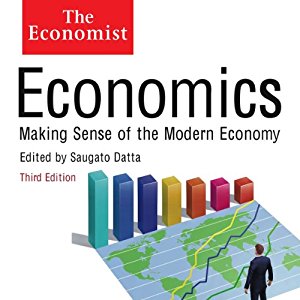
Economy in the https://www.youtube.com/watch?v=dqxQ3E1bubIEnglish dictionary is defined as:
1.the state of a country or region in terms of the production and consumption of goods and services and the supply of money.
2. careful management of available resources
in Investopedia it is classified as
An economy is the large set of inter-related production and consumption activities that aid in determining how scarce resources are allocated. This is also known as an economic system.
Where in SG what sort of resource do we have in this tiny red dot running 719.1 km².
Yes, the answer is a human resource. Where Singapore don’t have any natural resource nor big enough to have own agriculture.
Next this video clearly explain what economy is :
Macroeconomics
Macroeconomics (from the Greek prefix makro- meaning “large” and economics) is a branch of economics dealing with the performance, structure, behavior, and decision-making of an economy as a whole. This includes national, regional, and global economies.[1] Macroeconomics and microeconomics, a pair of terms coined by Ragnar Frisch, are the two most general fields in economics.In contrast to macroeconomics, microeconomics is the branch of economics that studies the behavior of individuals and firms in making decisions and the interactions among these individuals and firms in narrowly-defined markets.
Macroeconomists study aggregated indicators such as GDP, unemployment rates, national income, price indices, and the interrelations among the different sectors of the economy to better understand how the whole economy functions. Macroeconomists develop models that explain the relationship between such factors as national income, output, consumption, unemployment, inflation, savings, investment, international trade and international finance.
While macroeconomics is a broad field of study, there are two areas of research that are emblematic of the discipline: the attempt to understand the causes and consequences of short-run fluctuations in national income (the business cycle), and the attempt to understand the determinants of long-run economic growth (increases in national income). Macroeconomic models and their forecasts are used by governments to assist in the development and evaluation of economic policy.
https://en.wikipedia.org/wiki/Macroeconomics
Microeconomics
Microeconomics (from Greek prefix mikro- meaning “small”) is a branch of economics that studies the behavior of individuals and firms in making decisions regarding the allocation of scarce resources and the interactions among these individuals and firms.
One goal of microeconomics is to analyze the market mechanisms that establish relative prices among goods and services and allocate limited resources among alternative uses. Microeconomics shows conditions under which free markets lead to desirable allocations. It also analyzes market failure, where markets fail to produce efficient results.
Microeconomics stands in contrast to macroeconomics, which involves “the sum total of economic activity, dealing with the issues of growth, inflation, and unemployment and with national policies relating to these issues”.Microeconomics also deals with the effects of economic policies (such as changing taxation levels) on the aforementioned aspects of the economy.Particularly in the wake of the Lucas critique, much of modern macroeconomic theory has been built upon ‘microfoundations‘—i.e. based upon basic assumptions about micro-level behavior.
https://en.wikipedia.org/wiki/Microeconomics

